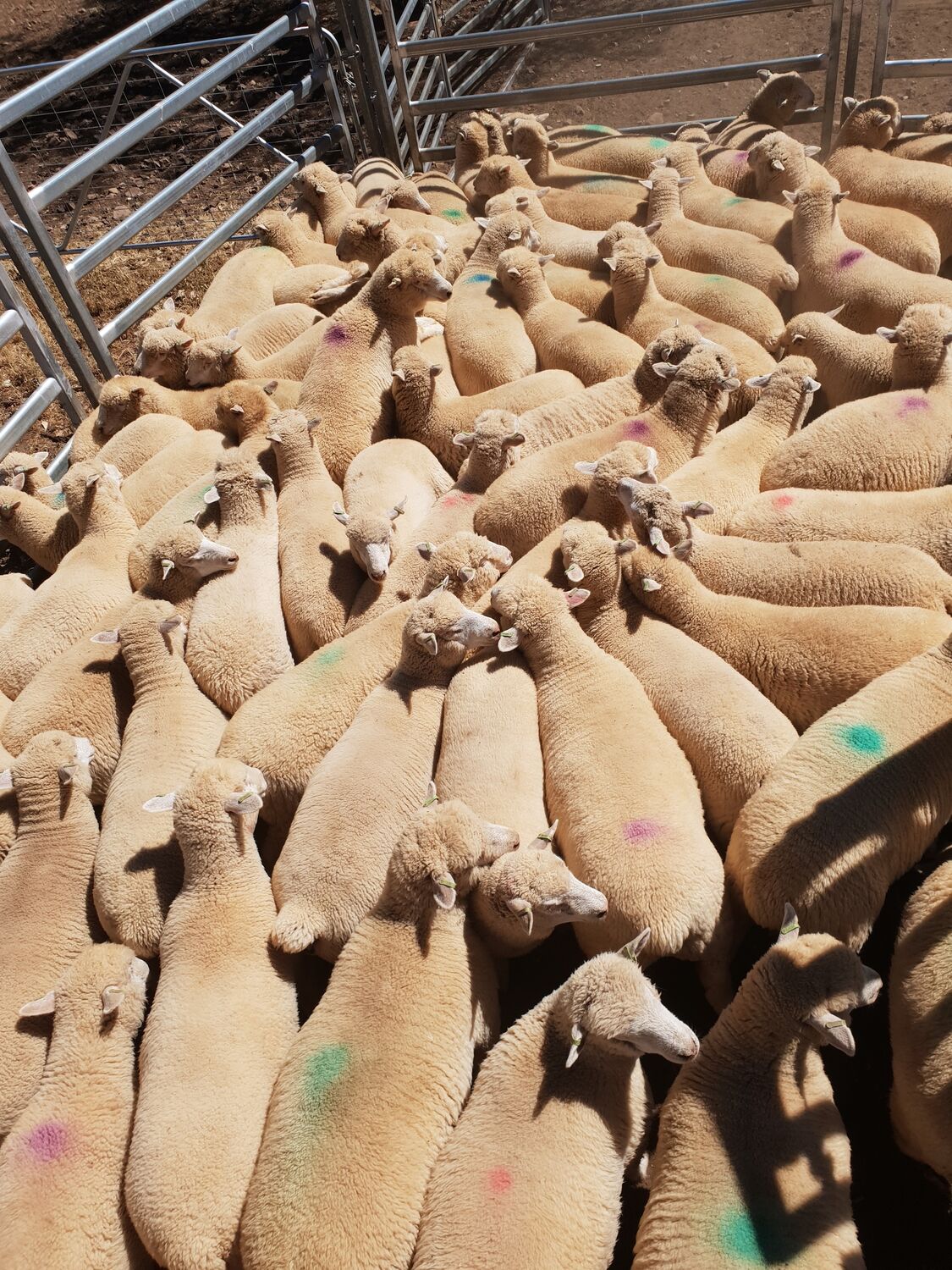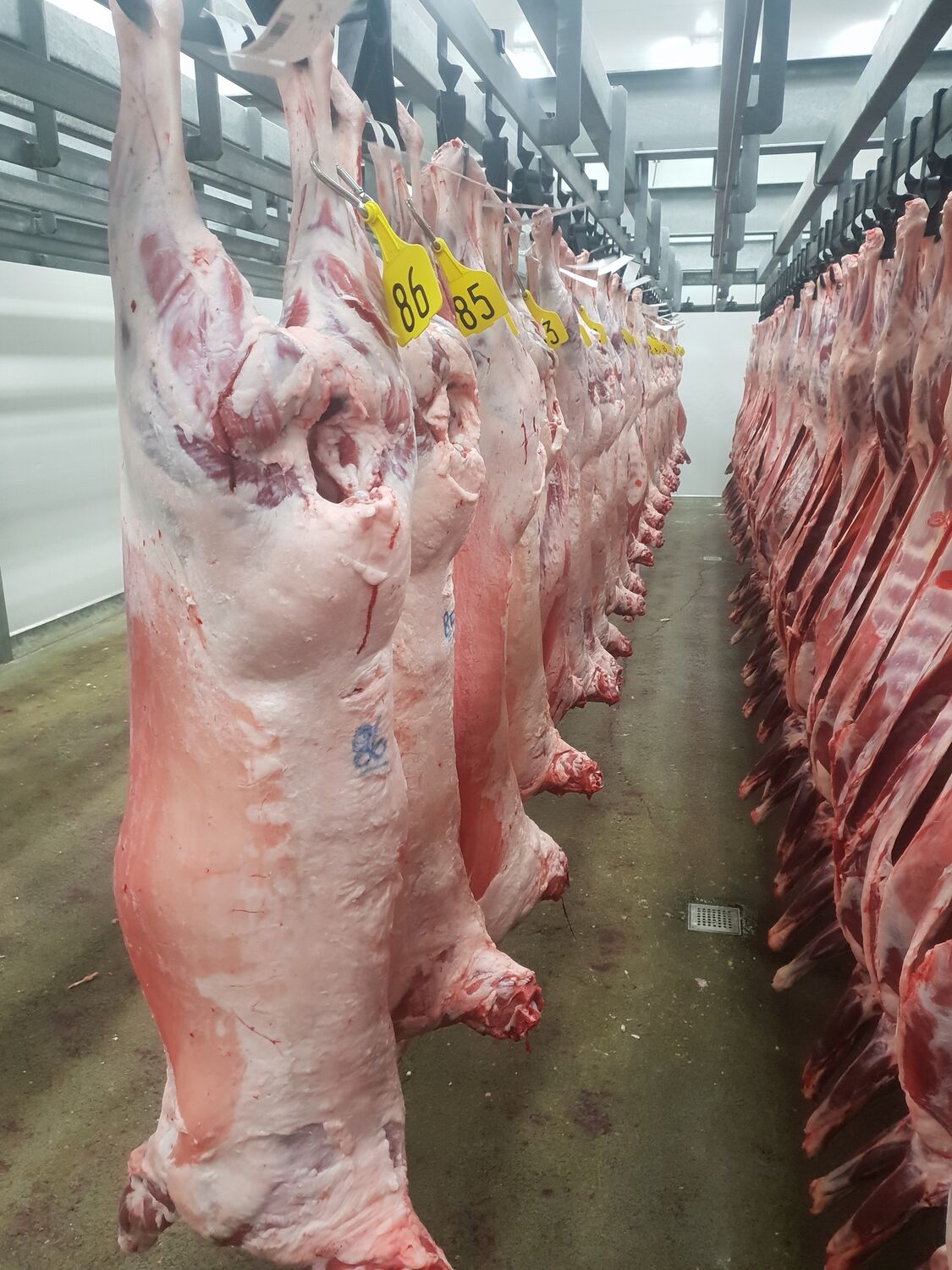You’ll find on this page:
The Bowan Park Research Flock delivered its first season of results to ram contributors in 2019.
The trial, following lambs from conception to kill floor, has provided extensive data for the breed, and the rams for season two of the trial have now been selected.
Devised and managed by the team at Ridgehaven Poll Dorsets, the research flock is registered as Bowan Park and run as a separate flock. Data has been recorded since artificial insemination in January this year, through to late October when the lambs were slaughtered.
The performance values measured were key commercial traits relevant to the Poll Dorset’s role as a terminal sire – growth, muscle and fat measured on live animals, and yield and eating quality at carcase assessment. This equates to birth weight, weaning weight, post-weaning weight, post weaning eye muscle depth and fat in the live animals, and yield (muscle, fat), intramuscular fat, shear force and pH on the carcases.
The lambs, out of a flock of registered Poll Dorset ewes and by rams from 12 different studs, were weighed at four, 10 and 17 weeks, before being slaughtered at 19 or 20 weeks.
They were also muscle scanned at 17 weeks, and ram contributors had a chance to visually assess all the progeny on-farm.
Sires were nominated by breeders, and those recognised as having a previous influence or likely to have a future influence on the breed were prioritised.
Bowan Park co-principal Isabele Roberts said they also worked on selecting rams from a range of breeding principals - those with Australian Sheep Breeding Values, those with performance testing as a focus, and those in between. Within that, they also looked for rams with a variety of different standout traits. The ram cohort has just been selected for the next season, with ewes to be artificially inseminated in the first two weeks of December.
“Progeny trials are particularly important to back up the claims that we make and as a breed as hole we make particular claims and the lambs that have come through this program have backed it up,” Isabele said.
“Trials give you a leg to stand on, if you make a claim about something and can prove it, no one can contest that. For ram contributors it is really great for them to see their genetics stacked up against others to see where their animals are currently sitting and where they can make changes in their breeding programs.”
Isabele said all ram contributors were invited to come and look at the lambs and judge for themselves the visual assessment.
“We split them into their sire groups and looked at each group of lambs as a whole, looking at what was the most significant attribute was for the group. The visual assessment highlighted how heritable visual aspect are - head type was really highly heritable and hindquarter shape was really quite heritable, and frame score as well - and showed you can’t underplay the influence of visual assessment in breeding. One thing to look at the data, but being able to compare groups of lambs gives you a really practical insight into how one ram compares to the other.”
Ram contributor Chris Marr of Gereden at Araluen, NSW, said this was the first sire progeny trial in the Poll Dorset breed, and it was exciting to bring a cross-section of rams from across the industry together.
“I think it has been the most beneficial thing that we have done within our stud and for our stud - the data we received back is something we have never seen before. We have all done testing through lambplan or whichever scanning system you prefer, but this is actually seeing what the sires we produce on farm are producing down the line. It shows us if we have made the right decisions in our breeding program to as what is on the ground now.”
“Getting into finer details of the data provided, we can really target specific areas we need to work on, with data telling us what we need to look at more closely. It was also very worthwhile seeing them on the hoof and running with the other progeny as well. You could think of the target market we are trying to accommodate, and were able to judge if the lambs are going to make those target markets.”
Summary Raw Data BP19
| Age | Average | Max |
|---|---|---|
| 4 Weeks | ||
| Live weight (kg) | 17.77 | 26.3 |
| Weight gain (g/day) | 366 | 552 |
| 10 Weeks | ||
| Live weight (kg) | 32.29 | 48 |
| Weight gain (g/day) | 380 | 571 |
| 17 Weeks | ||
| Live weight (kg) | 50.63 | 71.50 |
| Weight gain (g/day) | 387 | 649 |
| Eye Muscle Depth (mm) | 29.52 | 41 |
| Eye Muscle Fat (mm) | 4.52 | 9 |
| 20 Weeks | ||
| HCWT (kg) | 26.88 | 37.4 |
| Carcase dressing % | 52 | 57 |
| Carcase EMA (mm2) | 18.16 | 25.39 |
| Carcase EM Fat (mm) | 5.65 | 12 |
| Intramuscular Fat % | 4.71 | 9.75 |
| Shear Force (N) | 32 | 20.42 (min) |
Sires
| Sires Used BP19 | Sires Used BP20 |
|---|---|
| Faraday Park 170020 | Lambpro 140859 |
| Gererdan 170023 | Faraday Park 170020 |
| Gooramma 170220 | Rangeview 170107 |
| Hillcroft Farms 130497 | Springwaters 160066 |
| Hillden 160730 | Hillden 160780 |
| Ilfracombe 160108 | Derrynock 170809 |
| Rangeview 170107 | Yentrac 110169 |
| Springwaters 160066 | Hillden 170860 |
| Tattykeel 160350 | Gooramma 180682 |
| Valley Vista 170058 | Shirlee Downs 170123 |
| Wunnamurra 120455 | Kurralea 180140 |
| Wunnamurra 150235 | Wunnamurra 160298 |
| Wunnamurra 170303 | |
| Pepperton 180339 |

